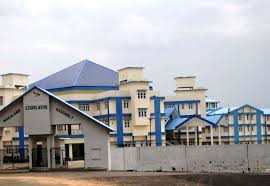
Our Correspondent
Kohima | August 27
MLA Y. Mhonbemo Humtsoe today brought up the pressing issue of oil and natural gas exploration and extraction in Nagaland during the zero hour of the 5th session of the 14th Nagaland Legislative Assembly (NLA) held in Kohima.
Raising the matter as one of urgent public importance, Humtsoe focused on the history and current status of the Changpang Oil Block. This block, covering 12 square kilometers and including Changpang and Old Tssori Villages in Wokha District, was awarded to the Oil and Natural Gas Corporation (ONGC) by the Government of India in 1973, under the Ministry of Petroleum and Natural Gas (MOPNG). The area was allocated during the Nomination era for the exploration and exploitation of crude oil.
Humtsoe informed the House that the ONGC drilled a total of 31 oil wells in the Changpang Oil Block. Of these, 21 wells produced high-quality crude oil, while 2 wells produced gas. Crude oil production from this block began in 1980.
According to Humtsoe, from 1980 to 1994, ONGC’s cumulative crude oil production from these fields reached 1.036 million metric tonnes (MMTs). This information was confirmed by a statement from the then Union Minister of Petroleum & Natural Gas, Dharmendra Pradhan, in response to an Unstarred Question No. 1093 posed by MP Tokheho Yepthomi in the Lok Sabha on December 7, 2018.
However, in May 1994, operations in the Changpang-Old Tssori Block were abruptly halted due to pressure from student communities and mass-based social organizations, forcing both the Nagaland government and ONGC to cease activities. Humtsoe noted that the production rate of crude oil from the Changpang Oil Block during 1980 to 1994 was approximately 250 metric tonnes per day, equivalent to around 4,453 barrels per day. This data was published in The Telegraph newspaper on May 11, 2012.
The Ministry of Petroleum and Natural Gas’s Estimates Committee in its 1998-99 Second Report stated that ONGC paid Rs 33.29 crores to the Government of Nagaland as accrued royalty for the period from 1980 to 1994. Out of this amount, Rs 67.57 lakhs was distributed among the oil-bearing landowners and affected villagers of Changpang and Old Tssori Villages by the Nagaland government, under the supervision of the District Administration of Wokha, Nagaland.
Humtsoe pointed out that the loss of revenue and royalty by the State of Nagaland from May 1994 to the present, solely from the Changpang Block, would amount to thousands of crores if calculated using both the Administered Pricing Mechanism (APM) and post-APM era calculations. He emphasized that if ONGC or any other national oil company had continued exploration and production activities over the last 30 years, not just in the Changpang Oil Block but also in other probable oil-bearing areas of Nagaland, the actual crude oil production would have been more than ten times the production recorded from 1980 to 1994.
Humtsoe argued that the state of Nagaland has incurred significant financial losses for not utilizing its natural oil resources to date. He underscored that the potential revenue could have had a substantial impact on the state’s economic development and improved the quality of life for its citizens. “This amount could have funded numerous infrastructural developments, factories, healthcare, education, and sports initiatives, ultimately transforming our state and generating employment opportunities for our young and energetic generation,” he said.
Looking back at past experiences and learning from them, Humtsoe stressed the need to harness Nagaland’s rich natural resources for the benefit of the state and its people. He urged the government to address the ongoing impasse and leverage these resources to achieve the economic goals it so earnestly desires.
He also mentioned that the stake-holding landowners are now eager and willing to support the government in its efforts to justly utilize Nagaland’s abundant natural resources, including oil, gas, and other minerals, for the benefit of all Nagas.
Humtsoe cited data provided by the Union Minister of State for Petroleum and Natural Gas to MP Tokheho Yepthomi on July 21, 2022, regarding the amount of crude oil extracted by ONGC in the eight oil fields it operates in the Disputed Area Belt (DAB) between Assam and Nagaland over the last five years. From 2018 to 2022, a total of 657,432 metric tonnes of crude oil, equivalent to 4.9 million barrels, was extracted. At the then-current rate of crude oil, the calculated royalty amounts to approximately Rs 3,399.79 crores, of which Rs 553 crores were paid to Assam as royalty.
He suggested that if the governments of Assam and Nagaland agreed to a fifty-fifty share of the royalty proceeds from the DAB oil extraction areas, Nagaland would have received Rs 276.50 crores as its share of the royalty from the sale of crude oil extracted during the period mentioned.
Humtsoe emphasized that unresolved issues have deprived Nagaland of significant monetary benefits. He called on all Nagas, especially the members of the Assembly, to work together to build a future where every citizen of Nagaland enjoys the benefits of economic vision and concerted efforts for the common good.
“This issue is taken up solely for the benefit of all concerned so that the Nagas could, at least one day, achieve economic independence for our people in the near future,” Humtsoe added.





